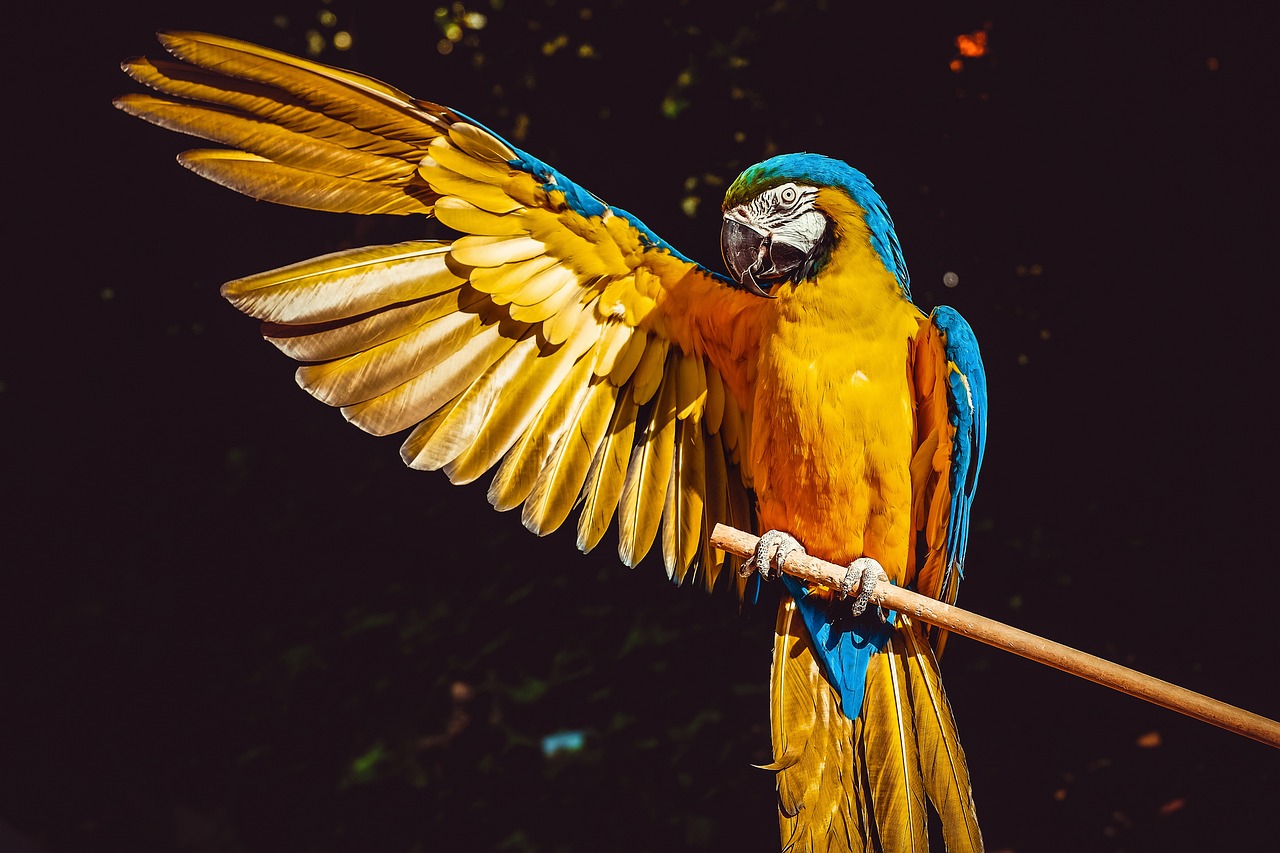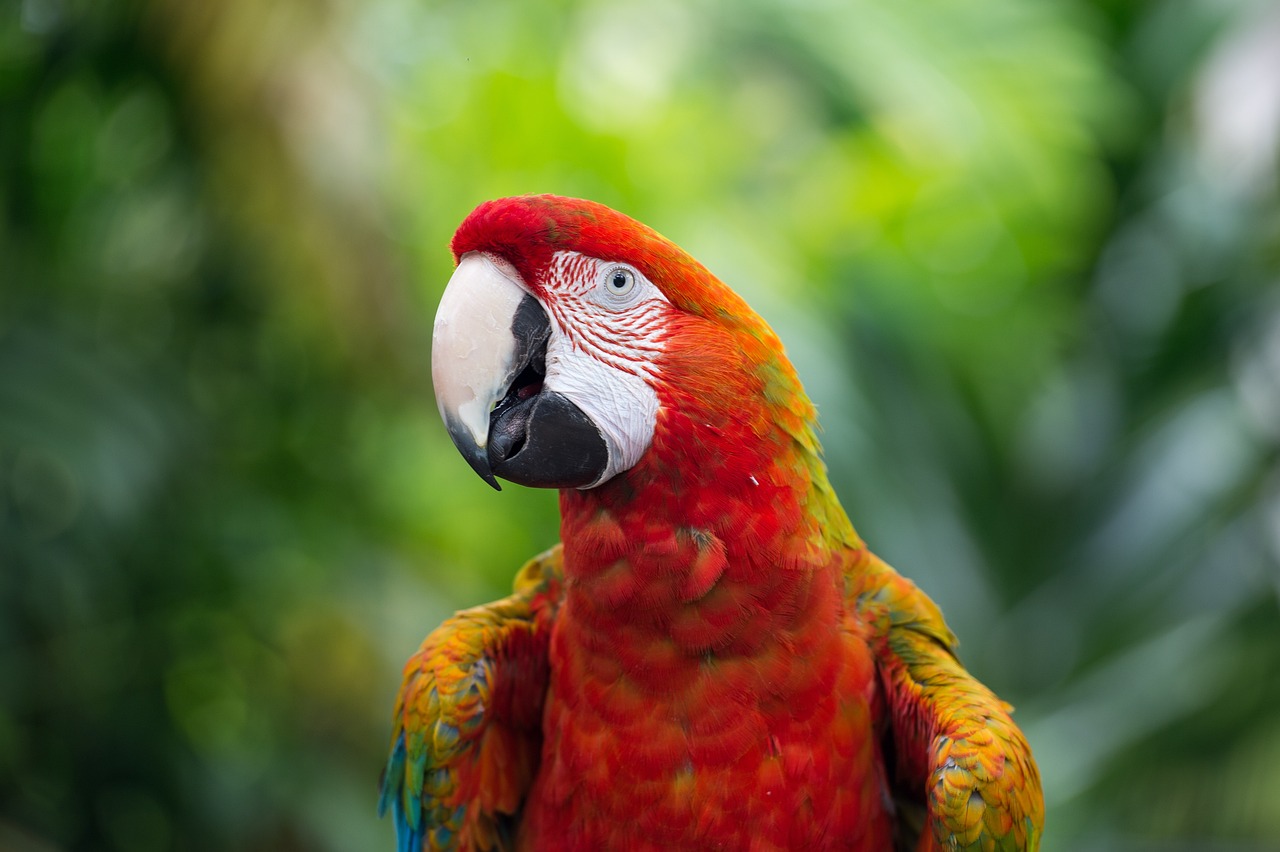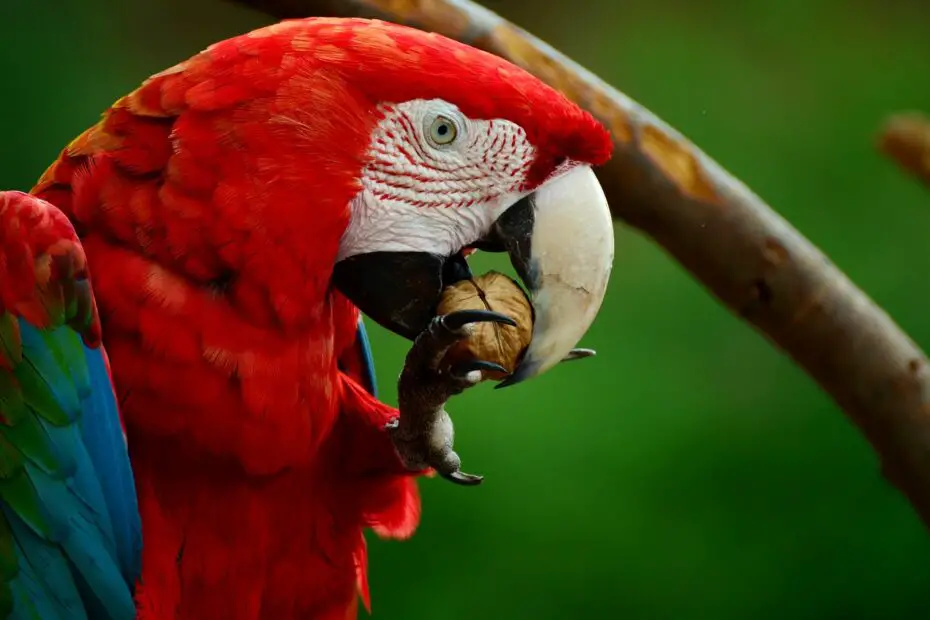1. Introduction
Welcome to the fascinating world of guacamaya birds, also known as macaws. These vibrant and intelligent birds have captivated people around the globe with their stunning plumage and engaging personalities. In this comprehensive guide, we will explore the mesmerizing characteristics of guacamayas, their natural habitats, care requirements, and more.
You may also want to know how long parrots live.
2. The Colorful Guacamaya Bird
Guacamayas, or macaws, are renowned for their strikingly colorful feathers. Their vibrant hues of red, blue, green, and yellow make them a true spectacle to behold. These large parrots are native to the tropical rainforests of Central and South America, where they add a burst of brilliance to the lush canopy.

3. Habitat and Distribution
Guacamaya birds primarily inhabit the dense forests, woodlands, and savannas of Central and South America. They can be found in countries such as Brazil, Peru, Ecuador, Colombia, and Mexico, among others. These regions provide the ideal conditions for their survival, including an abundance of food sources, nesting sites, and suitable climate.
4. Physical Characteristics
Guacamayas are known for their robust build and impressive size. They can measure anywhere from 30 to 40 inches (76-100 cm) in length, with a wingspan of up to 4 feet (120 cm). Their strong beaks are designed for cracking nuts and seeds, while their zygodactyl feet enable them to grasp and manipulate objects with ease. Their long, tapered tails aid in balance and maneuverability during flight.
5. Types of Guacamaya Birds
There are several species of guacamaya birds, each with its own unique color patterns and characteristics. Some of the most well-known species include the Scarlet Macaw, Blue-and-Gold Macaw, Green-winged Macaw, and Hyacinth Macaw. Each species possesses its own distinct charm and allure, making them highly sought-after among avian enthusiasts.
6. Feeding Habits
Guacamayas have a varied diet consisting of fruits, seeds, nuts, berries, and even the bark and leaves of certain trees. Their strong beaks allow them to crack open hard-shelled nuts and extract the nutritious contents within. In the wild, they play a vital role in seed dispersal, helping to regenerate the rainforest by spreading seeds far and wide. You can give them a high quality commercial food.
7. Breeding and Reproduction
Breeding among guacamayas is a fascinating process. These birds form strong pair bonds and engage in elaborate courtship rituals, which often involve vocalizations, displays of plumage, and intricate dances. Once a pair successfully mates, the female will lay 2 to 4 eggs in a tree cavity or a specially constructed nest. Both parents take turns incubating the eggs and raising the chicks.

8. Conservation Status
Due to habitat loss, illegal trade, and other factors, many species of guacamaya birds are facing threats in the wild. Several are listed as endangered or critically endangered by international conservation organizations. Efforts are underway to protect their habitats, combat illegal trade, and promote responsible captive breeding programs to ensure the survival of these magnificent birds.
9. Guacamayas as Pets
Owning a guacamaya bird as a pet can be a rewarding experience, but it requires careful consideration and commitment. These intelligent birds need ample space, mental stimulation, and social interaction to thrive in a domestic setting. Potential owners should be prepared to provide a suitable environment, a balanced diet, and regular veterinary care.
10. Caring for Guacamaya Birds
Providing optimal care for guacamayas is essential for their health and well-being. This includes providing a spacious and enriched living environment, offering a diverse and nutritious diet, and ensuring regular exercise and mental stimulation. Regular veterinary check-ups and monitoring their behavior and physical condition are also crucial for early detection of any health issues.
11. Common Health Issues
Guacamayas, like all living creatures, can be prone to certain health issues. These may include respiratory infections, feather plucking, malnutrition, and obesity. Regular veterinary check-ups, a balanced diet, proper hygiene, and a stress-free environment can help mitigate these risks and promote overall well-being.
12. Training and Socialization
Guacamayas are highly intelligent and trainable birds. With patience, positive reinforcement, and proper socialization, they can learn various tricks, commands, and even mimic human speech. Training and spending quality time with your guacamaya bird can strengthen the bond between you and ensure a fulfilling companionship.
13. Guacamaya Bird FAQs
- Can guacamayas talk like other parrots?
- Yes, guacamayas have the ability to mimic human speech, although individual capabilities may vary. With consistent training and interaction, they can develop an impressive vocabulary.
- How long do guacamayas live?
- Guacamaya birds have a long lifespan and can live up to 60 years or more with proper care, making them lifelong companions.
- Do guacamayas require a specialized diet?
- Yes, a well-balanced diet consisting of fruits, vegetables, seeds, and nuts is crucial for the nutritional needs of guacamayas. Consult with an avian veterinarian for specific dietary recommendations.
- Are guacamayas suitable for first-time bird owners?
- Due to their size, intelligence, and social needs, guacamayas may require more experience and dedication compared to smaller parrot species. They are generally better suited for experienced bird owners.
- Can guacamayas be kept in pairs or do they need companionship?
- Guacamayas are social birds and thrive with the companionship of their own species or human interaction. However, they require careful introductions and monitoring to ensure compatibility.
14. Conclusion
Guacamaya birds, with their vibrant plumage, captivating personalities, and fascinating behaviors, have an undeniable allure. Whether admired in their natural habitats or cherished as pets, these magnificent creatures continue to amaze and inspire us. By understanding their needs, providing appropriate care, and actively supporting conservation efforts, we can help safeguard their future and appreciate the awe-inspiring beauty of guacamayas.
